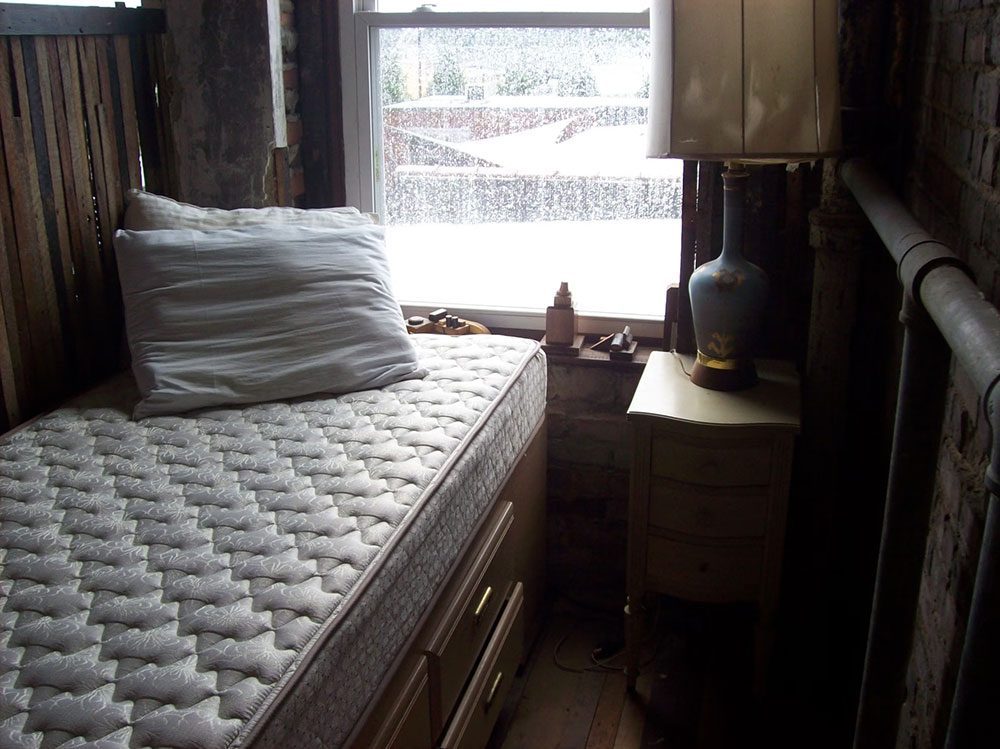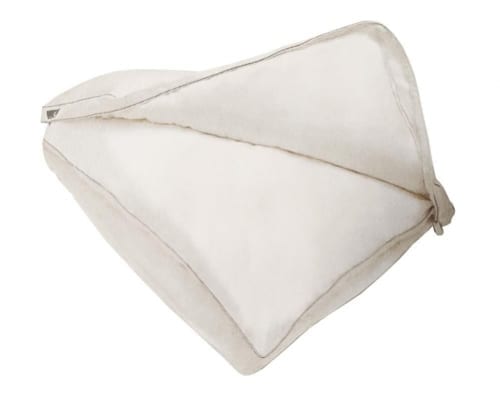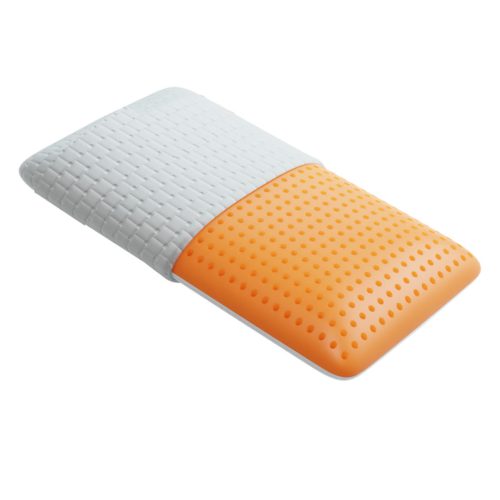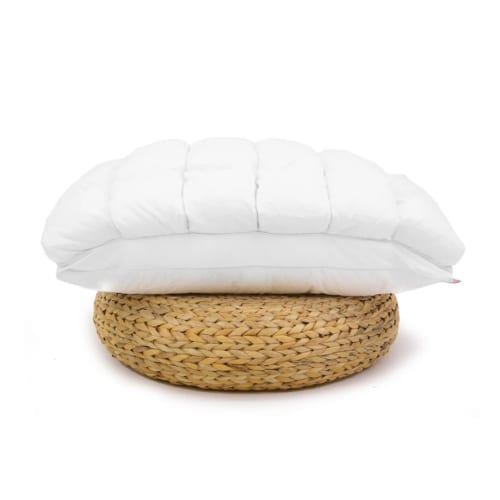
Choosing the right accessories for your mattress is crucial for both comfort and protection. Two common options that often create confusion among shoppers are mattress pads and mattress protectors. While they may sound similar, they serve different purposes and offer unique benefits. In this comprehensive guide, we will explore the differences between mattress pads and mattress protectors, helping you make an informed decision about which one is right for your bed.
Introduction
When it comes to maintaining the longevity and comfort of your mattress, accessories like mattress pads and mattress protectors play a vital role. However, many people are unaware of the differences between these two products, leading to confusion during the buying process. Understanding the distinctions between mattress pads and mattress protectors is crucial for selecting the right option to meet your specific needs.
In this guide, we will delve into the details of mattress pads and mattress protectors, exploring their materials, benefits, and functions. We will also provide a comparative analysis of the two, highlighting their unique features and helping you decide which one is best suited for your bed. So let’s dive in and discover the differences between mattress pads and mattress protectors.
What is a Mattress Pad?
A mattress pad is an additional layer, typically made of quilted material, that is placed on top of your mattress. Its primary purpose is to enhance the comfort of your bed by adding a soft and cushioned surface. Mattress pads come in various thicknesses and materials, allowing you to customize the feel of your mattress to suit your preferences.
Materials Used in Mattress Pads
Mattress pads are available in a wide range of materials, each offering unique benefits and characteristics. Here are some common materials used in mattress pads:
- Cotton: Cotton mattress pads are breathable, hypoallergenic, and easy to maintain. They provide a soft and comfortable surface, making them ideal for those who prefer a plush feel or have sensitive sleep needs.
- Wool: Wool mattress pads are thinner than cotton pads but offer a softer texture. They have natural antimicrobial properties and help regulate body temperature, keeping you cool in the summer and warm in the winter.
- Feathers: Made from the luxurious under-feathers of ducks or geese, feather mattress pads provide a cozy and plush sleeping surface. They are known for their exceptional softness and insulation properties.
- Polyester or Rayon: Synthetic fiber mattress pads, such as those made from polyester or rayon, are highly durable and resistant to stains, allergens, and bodyweight pressure. They are an excellent choice for those seeking longevity and easy maintenance.
- Memory Foam: Memory foam mattress pads offer superior support and pressure relief. The foam molds to the contours of your body, reducing joint pain and ensuring a restful sleep experience.
- Latex: Latex mattress pads provide firmness and structure to your mattress. They are antimicrobial and offer excellent support, although some sleepers may find the rubber smell or heat retention bothersome.
Benefits of Using a Mattress Pad
Mattress pads offer several advantages that can enhance the overall comfort and longevity of your mattress. Here are some key benefits of using a mattress pad:
- Increased comfort: By adding an extra layer of padding, mattress pads provide a softer and more luxurious feel to your bed. They can alleviate pressure points and promote better sleep quality.
- Protection against wear and tear: Mattress pads act as a barrier, protecting your mattress from everyday wear and tear. They can help prevent the mattress from sagging and extend its lifespan.
- Allergen resistance: Some mattress pads, particularly those made of cotton or synthetic fibers, are hypoallergenic and resistant to dust mites, allergens, and bacteria. This can be beneficial for individuals with allergies or respiratory sensitivities.
- Temperature regulation: Certain mattress pad materials, like cotton and wool, offer natural breathability and temperature regulation. They allow for better airflow, preventing overheating during sleep.
- Easy maintenance: Mattress pads are generally machine-washable, making them easy to clean and maintain. This helps keep your bed fresh and hygienic.
Now that we have explored the features and benefits of mattress pads, let’s move on to understanding mattress protectors.
What is a Mattress Protector?
A mattress protector is a fitted sheet-like covering that encases your entire mattress, providing a protective barrier against spills, stains, allergens, and bed bugs. Its primary function is to safeguard your mattress from potential damage, ensuring its longevity and cleanliness.
Types of Mattress Protectors
Mattress protectors come in various types, each offering different levels of coverage and protection. Here are the most common types of mattress protectors:
- Encasement: A mattress encasement is a zippered protector that fully encloses your mattress, protecting it from top to bottom. It provides the highest level of protection against spills, stains, bed bugs, and allergens. Encasements are particularly useful for individuals with allergies or those looking to safeguard their mattress against infestations.
- Fitted: Fitted mattress protectors resemble traditional fitted sheets, covering the top surface of the mattress and the sides. They offer excellent protection against spills and stains, although the bottom surface of the mattress remains exposed. Fitted protectors are the most common type and are suitable for most sleepers.
- Top Protector: Top mattress protectors cover only the top surface of the mattress, acting as a shield against spills and stains. They are easily removable and washable, making them convenient for individuals dealing with incontinence or looking for extra protection for children or pets.
Advantages of Using a Mattress Protector
Investing in a mattress protector offers several benefits that can significantly impact the lifespan and cleanliness of your mattress. Here are some advantages of using a mattress protector:
- Protection against spills and stains: Mattress protectors create a waterproof barrier, preventing liquids from seeping into the mattress and causing stains or damage. This is particularly useful for households with children or individuals prone to accidents.
- Allergen and dust mite resistance: High-quality mattress protectors are designed to repel allergens, dust mites, and other microscopic particles that can accumulate in your mattress over time. This can be beneficial for individuals with allergies or asthma.
- Bed bug prevention: Encasement mattress protectors provide a secure barrier against bed bugs, preventing infestations and protecting your sleep environment. They are an essential investment for individuals living in areas prone to bed bug problems.
- Easy maintenance: Mattress protectors are generally machine-washable, allowing for easy cleaning and maintenance. This helps keep your mattress fresh and hygienic, promoting a healthier sleep environment.
Now that we have explored the features and benefits of mattress protectors, let’s move on to a comparative analysis of mattress pads versus mattress protectors.
Mattress Pad vs. Mattress Protector: A Comparative Analysis
When deciding between a mattress pad and a mattress protector, it is important to consider their unique features and functions. Here, we will compare mattress pads and mattress protectors based on different aspects to help you make an informed decision.
Thickness and Comfort
Mattress pads are generally thicker, ranging from 1 to 2 inches in thickness. They are designed to add an extra layer of cushioning and comfort to your mattress, enhancing its overall feel. The materials used in mattress pads, such as memory foam or down, provide a plush and cozy sleeping surface.
On the other hand, mattress protectors are typically thinner, resembling fitted sheets. Their primary purpose is to protect the mattress rather than add significant comfort. While some mattress protectors may have a slight padding, their main focus is on durability and waterproofing.
Purpose and Functionality
Mattress pads serve a dual purpose of providing comfort and protection. They are designed to improve the overall feel of your mattress and offer an additional layer of cushioning. However, they also provide some protection against wear and tear, helping extend the lifespan of your mattress.
Mattress protectors, on the other hand, are primarily focused on protecting your mattress from spills, stains, allergens, and bed bugs. Their main function is to act as a barrier between the mattress and external elements that can potentially damage it. They offer comprehensive protection, ensuring the longevity and cleanliness of your mattress.
Waterproofing and Stain Resistance
Waterproofing and stain resistance are key features that differentiate mattress pads from mattress protectors. While not all mattress pads are waterproof, some are specifically designed to provide a middle ground between a pad and a protector. Waterproof mattress pads are a popular choice as they offer both comfort and protection.
Mattress protectors, on the other hand, are designed to be waterproof and spill-proof. They create a barrier that prevents liquids from seeping into the mattress, protecting it from stains and potential damage. This makes mattress protectors an ideal choice for households with children, pets, or individuals prone to accidents.
Price Range
When it comes to price, mattress pads and mattress protectors vary based on the materials used and the level of protection offered. Generally, mattress pads tend to have a higher price range compared to mattress protectors. The price can also depend on the size, thickness, and specific features of the product.
Mattress protectors, particularly fitted protectors, are usually more affordable due to their primary function of protection rather than added comfort. However, specialized protectors like encasements that provide comprehensive protection against bed bugs may be priced higher. It is important to consider your budget and requirements when making a purchasing decision.
Now that we have compared mattress pads and mattress protectors based on different aspects, let’s move on to the next section to understand how to choose between the two.
How to Choose Between a Mattress Pad and a Mattress Protector
Choosing between a mattress pad and a mattress protector depends on your individual needs, preferences, and priorities. Here are some factors to consider when making your decision:
Identifying Your Needs and Priorities
Start by understanding your specific requirements and priorities. Do you prioritize comfort and softness, or is protection against spills and stains your primary concern? Identifying your needs will help you determine which accessory will serve you best.
Considering Material and Construction
The material and construction of the mattress accessory play a crucial role in determining comfort, durability, and protection. Consider the different materials available for both mattress pads and mattress protectors, and choose the one that aligns with your preferences and requirements.
Evaluating Comfort and Support
If comfort is your main focus, a mattress pad may be the better option. Look for materials like memory foam or down that provide a plush and cozy feel. However, if you prioritize support and protection, a mattress protector will be more suitable. Ensure that the protector is made of durable materials that can withstand regular use.
Assessing Waterproof and Stain-Resistant Features
If spills, accidents, or stains are a common concern, prioritize a mattress protector with waterproofing and stain-resistant properties. Look for protectors that offer comprehensive coverage and can safeguard your mattress against liquid damage.
Budget Considerations
Consider your budget when making a decision. Mattress pads may be more expensive due to their added comfort features, while mattress protectors offer a more affordable option for those primarily seeking protection. Determine your budget range and choose an accessory that fits within it.
By considering these factors and understanding your specific needs, you can make an informed decision between a mattress pad and a mattress protector.
Conclusion
Choosing between a mattress pad and a mattress protector requires careful consideration of your needs and priorities. While mattress pads enhance comfort and add a layer of cushioning, mattress protectors focus on protecting your mattress from spills, stains, allergens, and bed bugs. By understanding the unique features and benefits of each option, you can make an informed decision that meets your specific requirements.
Remember to consider factors such as material, comfort, waterproofing, and budget when choosing between a mattress pad and a mattress protector. Both accessories play a crucial role in maintaining the longevity and cleanliness of your mattress, ensuring you enjoy a comfortable and protected sleep environment for years to come.
Now that you are equipped with the knowledge to differentiate between mattress pads and mattress protectors, you can confidently choose the option that best suits your needs. So go ahead, enhance the comfort and protection of your mattress with the right accessory!







